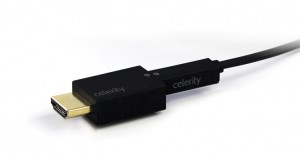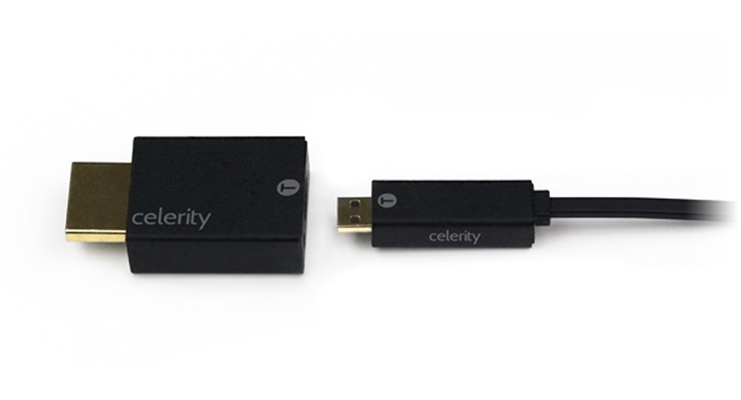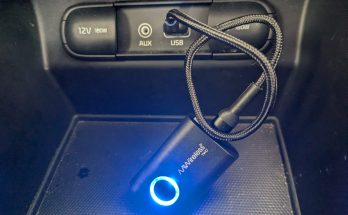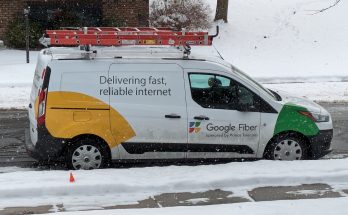Testing Celerity Technologies HDMI cables
 Electronic System Contractors (ESC) have a deep-seated hatred of HDMI. It’s not the kind of hatred one has for an enemy, but for rush hour traffic. HDMI is unavoidable, what with it’s copy protection and high-resolution video and audio, but it’s incredibly difficult to implement in long distances. HDMI was built on the DVI specification designed for desktop computers with cable lengths in the several feet at most, but custom installation requires video runs across the entire residence or business. To accomplish this with analog video required expensive copper cables, and sometimes isolation electronics to correct for RF interference or ground loops, but even with a degraded signal it worked. HDMI can be run across inexpensive category wire, but it requires more precise electronic transmitters and receivers to provide a video signal; and if the signal doesn’t appear on the display, there’s nothing to do to improve the image except find out what convoluted mess HDMI had made between its source and its sink.
Electronic System Contractors (ESC) have a deep-seated hatred of HDMI. It’s not the kind of hatred one has for an enemy, but for rush hour traffic. HDMI is unavoidable, what with it’s copy protection and high-resolution video and audio, but it’s incredibly difficult to implement in long distances. HDMI was built on the DVI specification designed for desktop computers with cable lengths in the several feet at most, but custom installation requires video runs across the entire residence or business. To accomplish this with analog video required expensive copper cables, and sometimes isolation electronics to correct for RF interference or ground loops, but even with a degraded signal it worked. HDMI can be run across inexpensive category wire, but it requires more precise electronic transmitters and receivers to provide a video signal; and if the signal doesn’t appear on the display, there’s nothing to do to improve the image except find out what convoluted mess HDMI had made between its source and its sink.
Over the past couple of years HDMI video baluns have come to market delivering HD video long distances on category or coax cable. This provided a solution for long runs, but often had difficulties working. An integrator might try three or four baluns before getting one that works for the specific situation they faced, and usually they would have to sacrifice a feature to get the video. This might include lowering the output resolution or doing without 3D. One solution many companies have tried is the use of fiber optic cables attached to transmitters and receivers as fiber provides a higher bandwidth and longer run lengths. Fiber optic cable and these electronics were pretty expensive, and often prohibitively so. Fiber is also more difficult to terminate than copper, leading many ESCs to ignore fiber.
 And then there were fiber HDMI cables that integrated the electronics without the need for external electronics. Manufacturers of these cables came and went as ESCs found pulling these cables to be difficult as the ends of the cables were very large so they wouldn’t fit through conduit. Celerity Technologies took all of these problems and put together a unique solution: a pre-terminated fiber optic HDMI cable that had small ends.
And then there were fiber HDMI cables that integrated the electronics without the need for external electronics. Manufacturers of these cables came and went as ESCs found pulling these cables to be difficult as the ends of the cables were very large so they wouldn’t fit through conduit. Celerity Technologies took all of these problems and put together a unique solution: a pre-terminated fiber optic HDMI cable that had small ends.
But how well do these cables work?
The first thing I noticed with these cables which might pose a problem is that they are directional. The transmit and receive ends are detachable to allow the cables to be easily pulled in walls, but you must make sure to pull the right end. They’re labelled clearly, but I can still imagine mistakes being made. The next issue is the receive end must be powered with a USB port, and not all TVs have USB on them, so a newer TV or other USB power source must be provided at the receive end for the cable to work. And then you’re still not guaranteed to receive a signal. And this isn’t necessarily the fault of Celerity, but in the way that the HDMI specification isn’t uniformly implemented by all manufacturers.
The first test of Celerity provided mixed results. A Blu-ray Disc player would work directly with an HDTV, but a receiver and cable box wouldn’t. Celerity provided a new transmit connector which included USB power as well as they found some source equipment (usually the cable boxes) didn’t provide ample power on the HDMI output. This was tried with the same results: no image.

Next, two Celerity 80-foot cables were tested side by side with two inexpensive 50-foot Key Digital copper cables using a series of different displays and sources. These results were perplexing. In some instances the picture would work, and in others it wouldn’t. I’ll get into the assumed technical reasons this was the problem, but first I’ll detail the equipment and results.
We had set up four commercial HDTVs: two LCDs from Sony, one from Sharp and an older Pioneer plasma. We also had an Atlona signal generator and test display, both of which can handle all TV resolutions. The commercial source equipment was a variety of Time Warner Cable boxes from Cisco and Scientific Atlantic, a DirecTV receiver, an Apple TV, a Kaleidescape player, and a Sony Blu-ray Disc player. In addition, a Marantz surround receiver was included to both provide on screen image generation and to test sources through the receiver itself.
The signal generator worked on all cables and on all displays at all resolutions, including 3D 1080p at 24fps, and 1080p 60Hz. This was not surprising because this is a high-quality product designed to benchmark standards. Similarly, the test display worked with all sources on all cables. But with the commercial sources, the results varied. The DirecTV receiver worked with image and sound, and so did all other sources except the cable boxes and the receiver.
The Marantz receiver initially showed nothing but a black screen and white overlay text for volume or source except with the copper HDMI cables, but then it wouldn’t show anything at all through the Celerity cables. The Marantz receiver wouldn’t even show its own generated on screen display, let alone any source passed through it. Both passive and active transmitters were tried with the same result.
The biggest trouble was with the Time Warner Cable receiver boxes. These would work fine through the copper cables and through the Celerity on the test display, but had mixed results on the commercial displays. On the Sony displays am image would appear for a few seconds and then a screen would appear with a message that the TV wasn’t HDCP compliant with a Code HDCP-019 indicator. This was immediate with the Scientific Atlantic boxes, but the newer Cisco box would have the image flick on and off a few times before the message appeared. This message was interesting to see on TVs which definitely support HDCP and worked just fine with the copper cables. (A reboot was required on the box before they would return to normal.) Both passive and active transmitters were tried with the same result. The same results were found on the Sharp TV. However, the older Pioneer Elite plasma HDTV (first 1080p plasma on the market PRO-FHD1) had no problem showing the cable box signal through the 80-foot Celerity cables.
What was the culprit?
While it would seem that the HDCP protocol was the problem, the issue is most likely the EDID property. EDID is the signal a display sends to a source to provide compatibility information. Most HDMI problems originate with EDID. These tables, which include resolution and timing properties, are not uniformly compiled by manufacturers which is what causes most of the HDMI problems. This is most definitely true of the Marantz receiver.
HDCP could be the problem with the cable receivers, though I suspect EDID. Each source possesses a certain number of HDCP “keys” which, I don’t know why the terminology changes, “handshakes” each device in the line all the way to the sink (the fancy term for display). Cable boxes can have as few as one HDCP key so when they are input into a receiver or switch that in-line device eats up the key and the display at the end of the line is unable to resolve the handshake and in turns displays nothing. I’m not sure exactly how many keys our test receivers have, but because they are able to provide signals through a receiver an on to the display on a copper cable but not on the fiber one, and the fact that they worked just fine on one commercial TV and on the test display, suggests the problem isn’t with HDCP even though the on screen error message suggests otherwise.
I’m not certain why the Celerity cables don’t work. It seems the cable has a built-in balun-type system which uses some form of an HDMI chipset to convert the signal to optical transmission and then again back to copper at the other end. This may or may not use HDCP keys (some HDMI baluns do and some don’t), but their inconsistency is certainly a problem. Obviously this isn’t entirely their fault as the source and/or repeater at the beginning of the chain has a role; this is mainly an HDMI problem with inconsistent implementation between manufacturers and inconsistent testing schemes.
What would I suggest to an ESC?
While we tested these cables with mainstream and mid- to high-end equipment, the results may vary with different cable operators providing different levels of features on their cable boxes, and different manufacturer (or different series) receivers. (Marantz is manufactured by the same company that owns Denon, and their HDMI problems mirror those of Pioneer, Pioneer Elite, Onkyo and Integra.) If your combination of vendors works with Celerity, great. For the rest of you (most of you), you’re going to end up with major headaches if you keep using baluns, and the fiber cable isn’t a bulletproof solution either. Where possible, high-end copper HDMI cables are the most reliable.



Baah. If an HDMI cable isn’t made with unicorn tears and cost as much as my mortgage payment, it can’t be any good.
Hey, if you read back on older posts, I contend cheaper HDMI cables are as good as any others. It’s when you extend that cable over long distances that you have problems. This is why I have to do these tests. HDMI is a such a pain at distance.